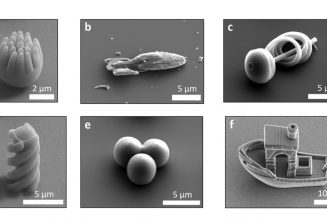
Electric racing series Formula E posted a loss of €10.6 million on record revenues of €161.5 million across its fifth season, or about $11.6 million and $177.6 million, respectively, based on the exchange rate at the time. The new financial figures were disclosed in a previously unreported filing with the United Kingdom’s Companies House Registry, and they cover the company’s fiscal year that ended on July 31st, 2019, just a few weeks after the fifth season came to a close.
Formula E has now posted a loss in each year of its existence, but the new figures show the series came as close as it ever has to turning a profit — meaning it was on relatively solid financial ground before its sixth season was completely disrupted by the COVID-19 pandemic earlier this year.
It’s a big accomplishment for such a young racing series, especially as other major motorsports have struggled to draw in new fans and have had difficulty retaining existing ones. But it’s not something that arrived out of the blue. Formula E is backed by a consortium of big investors (including Liberty Media and Discovery Communications), and it signed a 10-year deal with Saudi Arabia to perform races there. It has now mostly trimmed its losses each season as the series switched its main source of funding from capital investment to sponsorships and race revenue.
The series lost €63 million (about $69 million) in its first season on paltry revenues of €21 (about $23 million) across its first season. In season 2, Formula E nearly cut those losses in half to €35 million (about $39 million) on revenues of €57 million (about $63 million). The series lost €21 million (about $23 million) on €95 million (about $106 million) of revenue in its third season. And Formula E reported losses of €26 million (about $29 million) on €133.4 million (about $149 million) of revenue during season 4.
The fifth season was a big one for Formula E in a few ways. The series introduced a radical new car with a battery that lasted the entire length of its 45-minute races. In previous seasons, the battery only lasted for about 25 minutes of competitive racing, forcing drivers to pit and swap cars mid-race. The new car is also faster and more powerful, and its wild design helped set it apart from other open-wheel racing series.
By season 5, Formula E had also reached a point where it started to feature more manufacturer involvement than any other racing series on the planet. Nissan joined the series, and competed against the likes of Audi, Jaguar, and BMW. Another team (HWA RaceLab) entered the series as a sort of precursor to Mercedes-Benz’s involvement in season 6, which is when Porsche also joined.
As a result, Formula E organizers say in the new filing season 5’s cumulative attendance across its 13 races eclipsed 400,000, up 9 percent compared to season 4, and total TV viewership was 411 million, up 25 percent.
Like those other motorsports series, though, Formula E had to pause its sixth season earlier this year as the novel coronavirus outbreak turned into a pandemic. A revamped version of its new car has been delayed, and possibly even canceled, as the series is already working on another big redesign in time for the 2022–2023 season.








